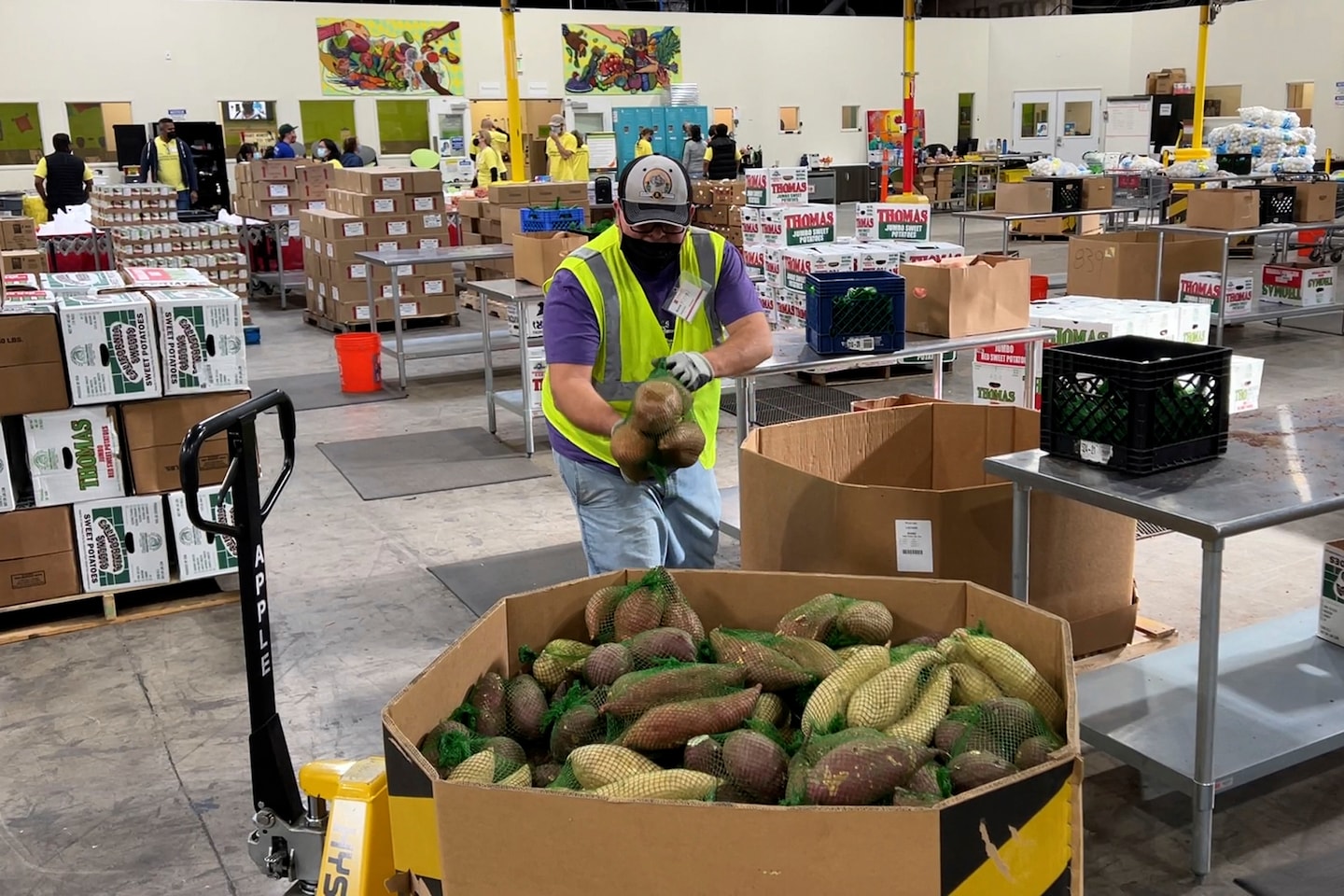Higher food prices around the country are pushing more Americans to food banks

“I’ve been winging it,” said Lewis, who is studying history. “There are some nights I don’t eat because I only have enough to feed them. I’ll eat whatever is left over on their plates. I just tell them I’m not hungry.”
Even as coronavirus rates continue to drop and the American labor market nears full recovery from the pandemic, food banks are seeing another surge in need. Most pandemic assistance programs have ended, inflation is rising and many Americans are once again having trouble making ends meet.
Food bank officials are reporting growing lines at their distribution centers nationwide. Rates of reported hunger have been increasing since early August, when nearly 8 percent of respondents said they “sometimes” or “often” did not have enough to eat, according to data from the Census Household Pulse Survey.
In early February, 10 percent of those polled said their household sometimes doesn’t have enough to eat. That uptick is more significant for households with children, rising to 13 percent, although off from pandemic peaks.
In late January and early February, after child tax credit payments ended, 35 percent of adults living in households with children said they struggled to cover usual costs, according to census data.
“Make no mistake, people are still struggling. They are struggling in Richmond and all across the country,” said Richmond Mayor Levar Stoney (D). “My fear, and the fear of many mayors, is that many of our residents are returning to chow lines. We want to keep the social safety net intact. It’s still necessary as people get back on their feet.”
Stoney was among those in the U.S. Conference of Mayors who sent a letter to Congress on Thursday urging them to support extending the expanded eligibility and increased benefit levels of federal nutrition programs. Inflation is the new challenge, said Thomas Mantz, chief executive of Feeding Tampa Bay, one of a network of 200 food banks nationwide.
“There’s been some mild recovery and that is good, but another concern brewing is that inflation is driving prices up in three key areas,” Mantz said. “For many Americans, 30 to 40 percent of their budget is rent, food and gas. But for the families we serve, it’s more like 60 percent, so you have families for whom instability is revisiting them significantly now.”
Although the economy has recovered for many Americans, and stimulus and child tax credits helped many families last year, there are still a lot of families who are digging out from the financial impact of extended furloughs or reduced household incomes, said Kyle Waide, president of the Atlanta Community Food Bank.
“While food distribution to neighbors in need has declined from the peak of the pandemic, the Atlanta Community Food Bank continues to see the need for food assistance considerably higher, as much as 30 percent, compared to pre-pandemic need,” Waide said.
Inflation data released in March indicates substantial price increases in gasoline, shelter and food. The gasoline index rose more than 6 percent in February and accounted for almost a third of the monthly increase. The food index saw the largest monthly increases since April 2020.
Foodsmart, a telehealth meal planning and food ordering app, reported an increase in users qualifying as food insecure over the past several months, with a majority of members saying “healthy food is too expensive.”
“The economic impacts of covid-19 will remain for the next few years, well after the health risks from the virus have subsided,” said Radha Muthiah, chief executive of Capital Area Food Bank, which serves the Washington metro area. “We know that need is still significantly higher, and we project that it will remain so. Anecdotally, many of our partners are still seeing higher volumes of individuals coming through their doors, some as many as two or three times their pre-pandemic levels.”
Federal programs that had been aimed to help food banks have expired, while food costs have gone up, which has meant Capital Area’s budget for purchasing food is seven times what it was before the pandemic, Muthiah said.
At the national level, food banks in the Feeding America network in February still moved twice as many truckloads of food as they did in February 2020, and transportation costs are up 20 percent, said Feeding America spokeswoman Zuani Villarreal.
And what’s in those trucks is costing more. A truckload of canned tuna cost $46,000 in February 2020 and is now $57,000, a truckload of peanut butter was about $34,000 and is now $40,000, and a truckload of diced tomatoes was $15,000 and is now $23,000.
Most food banks say food purchase costs are up, and they’re also paying more for transportation and distribution, while reporting labor shortages. Feeding America has asked Congress for more funding to buy food by bumping up money through the Emergency Food Assistance Program.
Agriculture Secretary Tom Vilsack told The Washington Post that $100 million in new grants has been made available to the Emergency Food Assistance Program state agencies, and that the USDA has the purchasing power through a separate program to supplement the commodities that food banks need. Vilsack said he understands food banks are facing difficult situations.
“We can always take a look at purchasing food. But what we’ve got here is a situation where we have lots of demand and unstable supply. We’re addressing the supply chain issue, but that’s going to take time,” Vilsack said, adding that the USDA “is very limited in terms of what we can do, absent appropriations by the Congress, or waiver authority, or what is left that hasn’t been allocated under pandemic assistance.”






